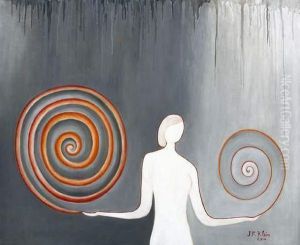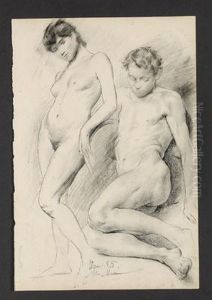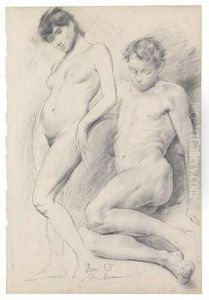Max Klein Paintings
Max Klein was not primarily known as an artist in the traditional sense but rather as an American inventor and entrepreneur who significantly impacted the world of crafts and hobbies. Born in 1908, Klein's most notable contribution was not a painting or sculpture, but the invention of the plastic paint-by-number kits, an innovation that brought a form of art into millions of homes.
Klein's foray into the art world was more about democratizing art creation than producing notable works of fine art himself. He founded the Palmer Paint Company in Detroit, Michigan, which became famous in the 1950s for creating Paint by Number kits after Klein collaborated with artist Dan Robbins. These kits included a board with lines delineating areas to paint, each area marked with a number corresponding to a specific color. This simple yet ingenious idea allowed those with little to no training in art to create their own paintings by following a numbered system, thereby making art creation accessible to a broader public.
While Max Klein's contributions to the world of art were commercial and industrial in nature, the cultural impact of his invention was significant. Paint by Number kits became a popular pastime in the United States and were a phenomenon in the 1950s and 1960s, reflecting the era's interest in DIY activities and the American ethos of self-improvement and accessible leisure.
Klein's invention was met with both enthusiasm and criticism. While many embraced the idea of an accessible art form, others in the art community criticized the kits for their formulaic approach to creativity. Despite the controversy, the kits played a role in shaping the mid-20th century American culture, blurring the lines between high art and popular culture.
Max Klein passed away in 1993, but his legacy lives on. The kits he helped bring to market are often seen as a nostalgic hobby, a precursor to today's adult coloring books, and a unique artifact of American culture. Paint by Number kits have even become collectible items, with vintage kits and completed paintings being sought after by enthusiasts. Moreover, they have been the subject of exhibitions, highlighting their role in the history of American art and consumer culture.


